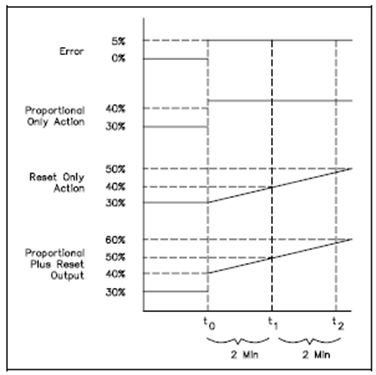Proportional Plus Reset:
This type control is actually a combination of two previously elaborates control modes, integral and proportional. Combining the two modes give output in gaining the benefits and compensating for the drawback of the two individual modes.
The major benefits of the proportional control mode are which an immediate proportional output is generates as soon as an error signal exists at the controller as displays in Figure. A proportional controller is considered a fast-acting device. This instant output change enables the proportional controller to reposition the last control element inside an associatively short period of time in response to the error.

Figure: Response of Proportional plus Reset Control
The main drawback of the proportional control mode is in which a residual offset error exists among the measured variable and the setpoint for all but one set of system conditions.
The major benefits of the integral control mode are in that the controller output continues to reposition the last control element until the error is decreased to zero. This output in the elimination of the residual offset error permitted through the proportional mode.
The major drawback of the integral mode is which the controller output does not instantly direct the final control element to a new position in response to an error signals. A controller output modified at a defined rate of change, and time is required for the final control component to be repositioned.
The combination of the two control modes is known as the proportional plus reset (PI) control mode. It merges the immediate output features of a proportional control mode along with the zero residual offset features of the integral mode.